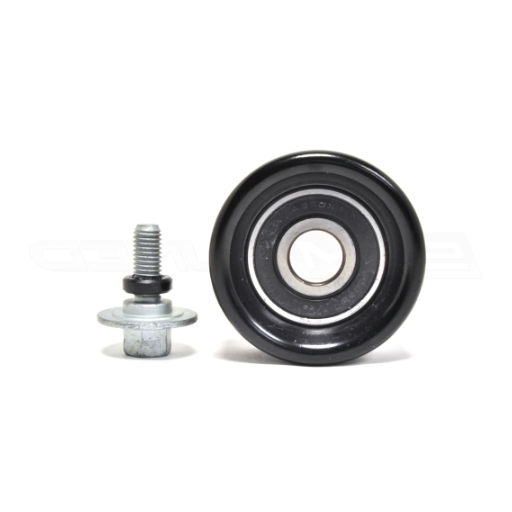The power steering system is a critical component of any modern vehicle, enabling drivers to maneuver their vehicles with minimal effort. However, like any mechanical system, it is susceptible to failures, often originating from specific components such as the bearings and pulleys in the power steering pump. This article provides a detailed and authoritative guide to diagnosing and resolving issues related to these components. By understanding how bearing wear, misaligned pulleys, or improper tension can compromise the pump’s functionality, readers will gain the knowledge needed to address problems effectively and maintain the vehicle’s steering performance. Whether you are a mechanical professional or a DIY enthusiast, this comprehensive troubleshooting guide equips you with the technical insights necessary for accurate diagnosis and repair.
What are the signs of a failing power steering pump pulley bearing?
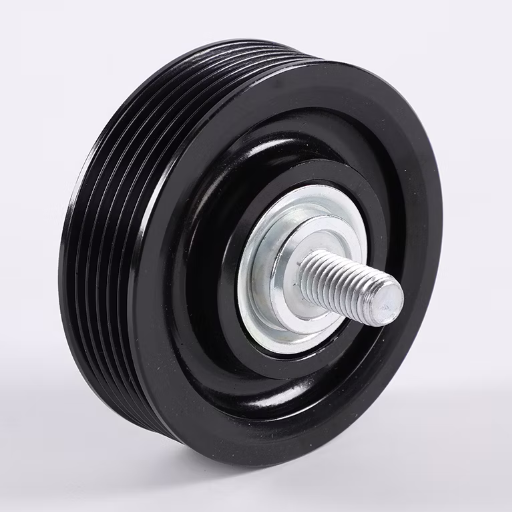
Common noises associated with bearing failure
Commonly, failing power steering pump pulley bearing exhibits behaviors that could facilitate diagnosis of the underlying problem. Such familiar sounds include:
- Grinding Noise: This type is generated when the surfaces of the bearing are worn out and the friction is comparatively high. Most of the time, grinding implies further deterioration of bearing conditions and a possible lack of lubrication within the bearing assembly.
- Whining or Whirring Sounds: During rotation of the steering wheel, a whining noise could mean there is a bearing working hard to turn or one that is not in its correct position. A broken pulley or too loose/too tight a belt can amplify these whines; proper belt tension for most systems is usually in the range of 100 to 130 pounds.
- Squealing or Chirping Noises: These types of sounds could signal that the bearing has partially failed, contaminated, or has been shifted from the position in which it was fixed to the belt. It is a must to check the alignment of the whole pulley system to avoid such noises.
These noises would assist in diagnosis if the bearings are compromised and need inspection and, if the situation demands it, replacement. Sounds might not only be subjective, though – specific visual examination could reveal the state of the bearing, pulley, and belt.
How the steering wheel feels changes with bearing issues
Changes in the handling and the steering wheel are both noticeable changes when the wheel bearings are compromised. Increased vibration or wobbling of the steering wheel is one of the primary changes observed. This occurs as the vehicle accelerates or during turns. The fault is attributed to the offset rotation of the affected wheel which disrupts the vehicle’s balance. A faulty bearing can increase the looseness or lack of precision while steering as the bearing no longer holds the wheel firmly, therefore impacting its alignment.
- Bearing Runout: In the scenario where the bearing runout is greater than the specified limit, say 0.05 mm to 0.08 mm for automotive bearings, then it leads to elevated bearing rotation and imbalanced steering.
- Axial and Radial Load Capacity: The excessive overuse of an already damaged bearing inhibits its ability to be functional which leads to structural instability, causing the bearing not to sustain its intended load. Bearing’s capability of tolerating axial or radial forces decreases and increases the amount of feedback received while steering.
- Wheel Speed: The severity of a defective bearing can be highlighted at higher vehicle speeds. For instance, at 50 mph/80 km/h more inconsistencies in the rotation can be observed which increases the vibrations and the looseness of the steering.
These steering problems can be avoided with proper vehicle inspection and maintenance, particularly the wheels and axle bearings.
Impact on power steering fluid levels and leaks
Maintaining the proper amount of power steering fluid is crucial for the functionality of the power steering system. When levels are too low, there is a decrease in hydraulic pressure which causes an excessive strain on the steering mechanism. This is especially true at slower speeds where more power steering assist is needed. The increased power used is very likely to cause the power steering pump to overheat, thus leading to failure. As a result, it is always important to keep the fluid levels at a range between the ‘MIN’ and ‘MAX’ markers on the reservoir.
Within the power steering system, the damage caused to the hoses, seals, or connections can result in a leak. The key indicators of a power steering fluid leak include low power steering fluid levels, visible puddles of reddish/light brown fluids, as well as unusual noises from the pump. Leak detection can be performed in the following ways:
- Operating Pressure: Check that the engine powers the system within the range specified – usually 70 150 bar, or 1,000 2,200 psi for most vehicle models.
- Fluid Type: Use only the specified fluid type recommended in the owner’s manual to prevent compatibility issues with seals and hardware.
- Seal Durability: Always check the rubber O rings and seals frequently exposed to high temperatures.
For the power steering system to last longer and the vehicle to be handled safely, maintaining appropriate fluid levels and fixing any leaks as soon as they are detected is crucial.
How do I inspect the power steering pump pulley bearing?
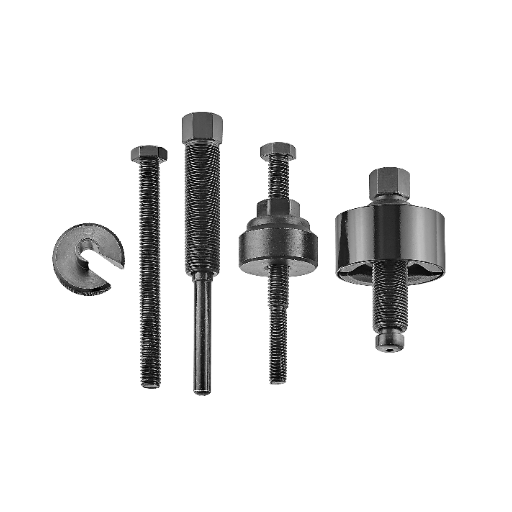
Visual inspection techniques under the hood
To properly check the power steering pump pulley bearing, please do the following:
- Look for Wear or Damage: Look for any surface damage on the pulley and bearing, for instance, cracks, chips, or deformation. Specially check the area where the belt runs over the pulley, as it may reveal signs of poor alignment or belt/bearing damage.
- Spin Check: With the engine off, try to turn the pulley by hand. You should be able to spin it without any resistance. If you hear grinding sounds or clunking noise, that means the bearing is likely damaged or loosened.
- Check the Belt Position and Tightness: Check whether the drive belt is well positioned above the primary pulley and is not loose. If the belt is misaligned or adjusted too tight, it can damage the bearing.
- Examine for Leaks: Check the area around the power steering pump pulley for fluid leakage due to a failed seal. Fluid leaks from the power steering will lower the performance of the pulley, and lead to heavier wear on the bearing.
- Confirm Bearing Play: Using a pry bar or your hands, check if the pulley can move sideways or spins too freely. The majority of manufacturers suggest that the tolerance for movement should not exceed 0.002 to 0.005 inches.
- Thermal Inspection: If available, use an infrared thermometer on a recently operated vehicle to check the temperature around the bearing housing. Consistent overheating (typically over 180°F or 82°C) may point to internal friction or lubrication failure.
These steps should provide clear indications of the bearing’s condition and aid in diagnosing any associated mechanical issues. Regular inspections as part of routine vehicle maintenance will prevent more extensive damage and costly repairs to the power steering system.
Testing for unusual movement or play in the pulley
Generally, this can be done visually while the engine is off. Focus on the pulley. For example, grab the pulley and try to move it left and right or push to determine if there is rotational slack. If it can move and wobble, it could mean that the bearings may need replacement or the screw is loose.
- Side-to-Side Movement: Ideally, there should be no perceivable lateral movement. Movement greater than 0.2 mm (0.008 inches) typically signals wear or improper installation.
- Rotational Slack: Attempt to check how much rotary movement is allowed before the component turns. If the free movement of the bolt exceeds one degree, it can indicate failure of the inner bearings or it may require re-alignment.
- Axial Load Capability: It must be verified that the pulley can withstand its designed axial load without any movement occurring. This must be confirmed with the manufacturer’s specifications concerning the load ratings of the pulley assembly.
These measurements should be conducted using calibrated tools, such as dial indicators, to ensure precision. If deviations are identified, the pulley assembly and associated components should be inspected for further mechanical failure or misalignment.
Can a bad pulley bearing cause damage to other steering components?
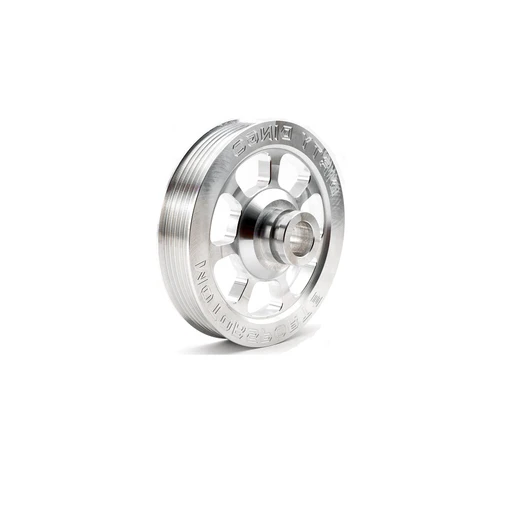
Potential impact on the power steering pump shaft
A faulty pulley bearing can indeed cause damage to other steering components, including the power steering pump shaft. From a mechanical perspective, when the pulley bearing fails, it can create increased friction and excessive lateral or axial forces on the shaft. This added stress can lead to shaft misalignment or accelerated wear. Specifically, the power steering pump relies on precise rotational dynamics; deviations can result in imbalances that might compromise the pump’s operational efficiency or longevity.
- Axial Load Threshold: The power steering pump shaft has to be designed to take loads up to 500 to 600 N (Newton) for light vehicle systems. Due to bearing failure, being forced to take more loads will deform the shaft.
- Rotational Speed: It is expected that the bearings will be within the range of 2000 to 5000 RMP during normal driving conditions. Due to bearing wear, these values can decrease which directly impacts the performance of the pump.
- Clearance Tolerances: Due to uneven forces all around the bearings, the tolerances between the bearing and shaft measured will be unstable.
All damaged bearings need to be replaced immediately on time to avoid more damage to the shaft and loss of adequate functionality of the system.
Effects on the power steering system as a whole
Let’s dive right into the factors that affect the performance of a pump. Constant changes in the flow of low-viscosity liquids, like hydraulic oil, can alter the performance of a pump’s system. Some of these include:
- Reduced Hydraulic Power: Bearing instability and its wear and tear influence the pump’s competency in keeping the hydraulic pressure level consistent. The system is self-sustainable and maintains a hydraulic pressure of 800 to 1,150 PSI normally. Decreasing the power beyond the thresholds due to compromised pump performance and inefficient hydraulic pressure may lead to decreased steering support and higher steering effort.
- Steering Responsiveness: There can be erratic changes, in the pace of steering fluid, due to changes in the bearing tolerances, allowing irregular flow. This misbalance can adversely affect the responsiveness and predictability of steering inputs. With abnormal flow comes harder than normal or even harder to control steering power during low speed turns.
- Secondary Component Damage: Running the power steering system for a long time with unserviceable bearings could result in the potential for metallic debris within the oil-contaminated piston, and the possibility of scratches within the hindering oil pump gears. This, undoubtedly, will damage the oil hydraulic system and introduce new problems like flawed steering racks and pressure hoses.
- System Noise and Pump Vibration: Failing bearings could cause a musky or whine-powered whirring sound while the system is running. Prolonged use will lead to excessive levels of vibration or trembling of the pump housing which, on average, is set at >0.3 mm/s RMS. A mark of serious mechanical imbalance.
In short, looking after bearing defects promptly would help to keep the system in order and enable components to avoid any progressive failure, as well as maintain the required accuracy and reliability of the powered steering system.
What are the steps to replace a power steering pump pulley bearing?
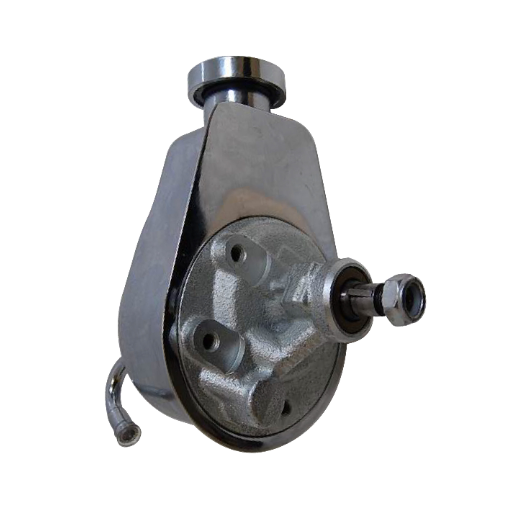
Tools and parts needed for replacement
While replacing a power steering pump pulley, the following tools and parts are needed:
- Pulley Removal Tool: Removes the pulley safely and accurately while avoiding damage to the pump, and ensures the removal is clean.
- Bearing Puller and Installer Kit: Used to pull out the old broken bearing and replace it with a new one.
- Torque Wrench: Used to apply the exact torque specifications, ensuring secure reassembly. Torque values typically range between 25-35 ft-lbs for the pulley bolt.
- Snap Ring Pliers: Required if the pulley or bearing is secured using a snap ring.
- Replacement Bearing: Ensure compatibility with the pump model. Make sure that the bearings averaged standard load ratings and proper measure diameters set by OEM.
- Lubricant: Recommended is a grease of high quality meant for automotive needs, which lowers friction hence increasing the lifetime of the bearing.
- Safety Gear: Special care should be taken when working with sharp parts or dust – proper gloves and safety glasses protect against such injuries.
All of these tools and components are essential to ensure a smooth and quick bearing replacement which results in minimum work downtimes while also improving the effectiveness of the power steering system.
Procedure for removing the old bearing
- Disconnect the Power Source: First, ensure that the entire system is switched off and unplugged to avoid the possibility of switching it on again by mistake. Also, check that every part that moves is motionless.
- Remove the Belt or Coupling: By the design of the matched system, detach the belt or coupling which attaches the pump with other accessories. So doing so will allow free movement of the bearing housing, and keep anything nearby from getting damaged.
- Access the Bearing Housing: Take off the cover of the bearing housing with the correct socket wrench or screwdriver that fits this device. Be sure to carefully unscrew every single screw or bolt to hide the threads from getting stripped or misaligned.
- Loosen Securing Components: Using a bearing puller, remove retaining clips or locking nuts, or set screws that are used to hold the old bearing in place. Make sure to use the appropriate type and size so that they aren’t damaged during removal.
- Extract the Old Bearing: Using the puller tool, apply steady even force to remove the old bearing. Steer clear of using too much force so as not to damage any items near it. If the bearing is particularly stubborn or stuck, you might try applying a heat source such as a heat gun to the housing which will allow it to loosen around the stubborn bearing. This should only be done if the maximum temperature recommendation threshold in the bearing’s datasheet is not exceeded.
- Inspect the Housing: After you have removed the old bearing, examine the housing in its entirety for any signs of wear and or corrosion together with any debris. Use a clean rag or a lint-free cloth to properly clean the surfaces. Check if the seating dimensions have not been altered and correspond to the specifications from the OEM.
By adhering to these steps and employing precision tools, the risk of damage is minimized, allowing for a smooth transition to installing the replacement bearing.
Installing and aligning the new bearing properly
To prevent power steering pump pulley bearing failure, I recommend the following steps:
- Position the bearing: Using one’s hand, align the bearing to the housing or shaft of the equipment. The bearing must be seated evenly, but do not push up the bearing, this can lead to misplacement or damage to the races or rolling elements of the bearing.
- Apply Proper Fitment Methods: Correct methods or tools must be used when dealing with specific types of bearings. These can include, but are not limited to; hydraulic presses, mechanical tools, and even thermal methods. An example would be heating the bearing with the use of an induction heater to a temperature of 80–100°C (176–212°F) to make it easier to fit the bearing. Of course, proper factory recommendations should be followed to ensure that the correct temperature is observed and to ensure the maximum limit of the bearing is not reached.
- Measure Alignment: After the bearing has been fit in, proper alignment should be checked with a dial indicator or any alignment laser tools as these offer precision measurement. The axial and radial runout should be tolerably positioned within the range stated in the technical datasheet. This step should be done to enable uniform load distribution and prevent high operational noise or vibration.
- Secure the Bearing: If applicable, tighten retaining screws, lock nuts, or other securing mechanisms to the torque values specified by the manufacturer. Over-torquing can deform components, while insufficient torque can lead to instability.
- Final Inspection: Manually turn the assembly and check for any abnormal changes in noise or resistance. Also, check if lubrication is provided as per grade and type specified e.g. NLGI grade 2 grease for general purpose or ISO VG 68 oil for high-speed applications.
By meticulously following these steps and adhering to the provided technical requirements, the new bearing will function optimally, ensuring reliability and extended service life.
How can I prevent power steering pump pulley bearing failure?
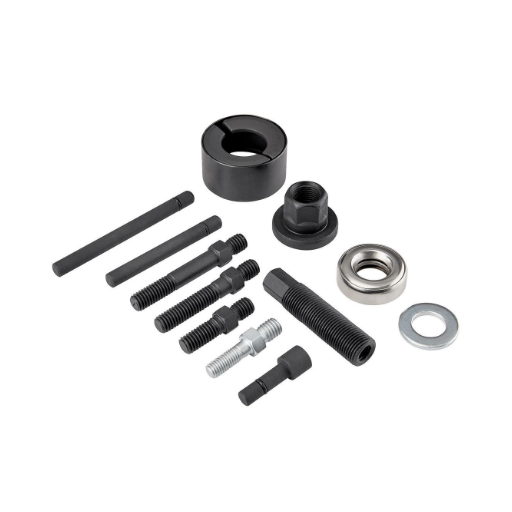
Regular maintenance tips for the power steering system
To avoid the failure of the power steering pump pulley bearing, I suggest doing these actions:
- Regular Fluid Checks: Check the power steering pump fluid’s quantity and quality from time to time. Safeguard the Proper fluid type prescribed by the manufacturer. An engine is subjected to lower and unclean fluids which could increase usage stress and expedite bearing damage.
- Alter as Necessary: Based on the operating conditions and type of vehicle, flush and replace the power steering fluid every 30,000 to 50,000 miles or based on the manufacturer’s set interval. The right viscosity index fluid guarantees a vehicle’s adequate lubrication and hydraulic system performance.
- Inspect the Belt Tension: Inspect the serpentine, or drive belt linked to the power steering pump for correct tension. A loose or overly tightened belt will make bearing the damaging pulley loose. The tension of the belt must comply with, the manufacturer’s torque or deflection requirement specifications, for instance in most cases 10-15 mm deflection on modern systems is acceptable.
- Monitor for Unusual Noises: Pay attention to any whining or grinding sounds coming from the power steering pump. These noises could indicate bearing issues or impending failure. Addressing these early can prevent further damage.
- Prevent Fluid Contamination: Use a new cap that protects the reservoir from dirt and water to avoid contamination. Any oil contamination will increase the wear on elements like internal bearings.
- Inspect Related Components: Regularly inspect the condition of the pulley and other related parts. A damaged, warped, or loose pulley will cause misalignment, which will increase the bearing load in the long run.
If those measures are taken, along with the selected type of liquid and its viscosity, and the belt tensioning, the power steering system reliability will be improved and the bearing failures eliminated.
Importance of proper power steering fluid levels
Staying within the recommended power steering fluid levels guarantees that the power steering system performs effectively and lasts a long time. When power steering fluid levels are low, it can increase system resistance and lead to pump, bearing, and other component breakdowns. Additionally, low levels could also give air entry into the system, resulting in aeration that reduces efficiency, produces noise, and even leads to overheating of the pump due to increased workload.
- Fluid Type: The manufacturer-specified power steering fluid should always be used, since other types may not be compatible with the system’s parts. Such incompatible fluids can lead to poor lubrication and increased component damage.
- Viscosity: Ensure the fluid’s viscosity is correct for the operating temperature range since the high temperatures will yield low-viscosity fluids which compromise lubrication and low temperatures will yield high-viscosity fluids which restrict flow.
- Reservoir Markings: The fluid levels should always be within the range of ‘MIN’ and ‘MAX’ to ensure proper reservoir pressure, especially to prevent air from entering the system.
With these factors maintained, the system should have a noticeable improvement in stability and functionality, allowing it to truly showcase reliable steering. In addition, the service lifespan is also significantly prolonged.
Recognizing early warning signs of bearing wear
To mitigate the risk of possible system breakdown, it is crucial to identify the early signs of bearing wear. During operation, strong or strange sounds such as grinding, humming, or whining provide the first intel on warning indicators that suggest bearing degradation. From my experience, these phenomena arise due to misalignment, contamination, or insufficient lubrication. Vibration in the steering wheel is yet another strong indicator, commonly brought upon by imbalances or excessive play due to worn bearings. When the steering becomes heavy or unresponsive, it indicates increased friction and the possible fact that there is a bearing failure.
- Lubrication Quality: The condition of lthe ubricant should be examined thoroughly as it can be the cause of degradation, contamination, or even changes in viscosity. Due to how directly lubricant quality resonates with bearing wear, its decline can trigger havoc.
- Vibration Frequency: A pattern of monitoring frequencies can be established and abnormal vibration frequencies should be diagnosed as they commonly relate to specific bearing faults, for example, rolling element defect (10-50 Hz).
- Axial and Radial Play: To reduce the risk of misalignment and increase wear, measuring bearing clearance within set tolerances of the manufacturer can do wonders.
- Operating Temperature: Keeping track of the operational temperature of the bearing is crucial as raising one can be a signal of too much friction or lack of lubricant which can worsen the mechanical wear.
Identifying these indicators leads to positive systems functionality which not only increases operational efficiency, but also component lifespan.
Frequently Asked Questions (FAQs)
Q: What are the common symptoms of a bad power steering pump?
A: Common symptoms include grinding noises when you turn the steering wheel, difficulty turning the wheel, whining sounds at high speeds, and low pressure in the power steering system. You may also notice fluid leaks or a burning smell from the power steering fluid reservoir.
Q: How can I tell if the power steering pump shaft bearing is failing?
A: Signs of a failing steering pump shaft bearing include louder noises when turning the wheel, especially at low speeds or when the engine is cold. You might also hear a high-pitched whine that changes with engine RPM. It’s important to check the bearings for damage if you suspect issues.
Q: Can a failing power steering pump cause the accessory belt to wear out faster?
A: Yes, a failing power steering pump can cause excessive wear on the accessory belt. If the pump’s pulley becomes misaligned or the bearings seize, it can lead to increased friction and heat, causing the belt to wear out prematurely or even break.
Q: What should I do if I’ve noticed symptoms of a failing power steering pump?
A: If you’ve noticed symptoms of a failing power steering pump, it’s important to have it inspected by an auto mechanic as soon as possible. Continuing to drive with a failing pump can lead to complete failure, increasing the risk of an accident. In some cases, you may need to replace the power steering pump.
Q: How does a failing power steering pump affect the car’s steering?
A: A failing power steering pump can make it much harder to turn the wheel, especially at low speeds or when parking. You may also experience inconsistent steering assistance, which can be dangerous at high speeds. In severe cases, the steering may become completely unassisted.
Q: Can a failing idler pulley cause similar symptoms to a bad power steering pump?
A: Yes, a failing idler pulley can sometimes cause symptoms similar to a bad power steering pump. Both can create noises when you turn the steering wheel or affect the tension of the accessory belt. It’s important to have a mechanic diagnose the exact cause of the issue.
Q: How often should I check my power steering fluid?
A: It’s a good practice to check your power steering fluid level at least once a month. Low fluid levels can cause pump failure and are often caused by leaks in the system. If you notice frequent drops in fluid levels, have your car inspected by a mechanic.
Q: Is it safe to drive with a failing power steering pump?
A: Driving with a failing power steering pump is not recommended. It can make steering difficult, especially in emergencies, and increases the risk of an accident. If the pump fails while driving, you may suddenly lose power steering assistance, which can be dangerous.

